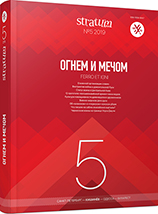Стена княжеского двора в Киеве и вопрос об истоках древнерусской сырцовой фортификации X в.
The Wall of the Princely Residence in Kiev and the Question of the Origin of the Mud-Brick Fortification in 10th Century Kievan Rus’
Author(s): Vyacheslav I. Baranov, Denis D. JolshinSubject(s): History, Archaeology, Architecture, Middle Ages, 6th to 12th Centuries
Published by: Издательский дом Stratum, Университет «Высшая антропологическая школа»
Keywords: Old Rus’; Kiev; Starokievskaya Hora; Desyatinnaya church; secular architecture; mud-brick; Byzantine fortification; First Bulgarian Kingdom fortification; Khazar fortification; Sarkel; Tikhaya Sosna;
Summary/Abstract: The article is an attempt to give the interpretation to the unique mud-brick construction on Starokievskaya Hora near the Desyatinnaya church excavated in 1909, 1911, and 2007. The authors undertake the comprehensive analysis of the field records of the early 20th century research and the stratigraphical observations in the course of the recent excavations of the secular buildings surrounding Desyatinnaya church, and presume that the mud-brick construction was a standing wall of the princely residence, and that it was erected by the builders responsible for the construction of the late 10th century mud-brick fortifications in Pereyaslav, Belgorod and others. A few versions of the origin of these builders are considered. The links with the building techniques of the Saltovo archaeological culture fortifications on the river Tikhaya Sosna are believed to be much more grounded than the links with the contemporary fortification tradition of Byzantium or the First Bulgarian Kingdom.
Journal: Stratum plus. Археология и культурная антропология
- Issue Year: 2019
- Issue No: 5
- Page Range: 243-265
- Page Count: 23
- Language: Russian
- Content File-PDF

